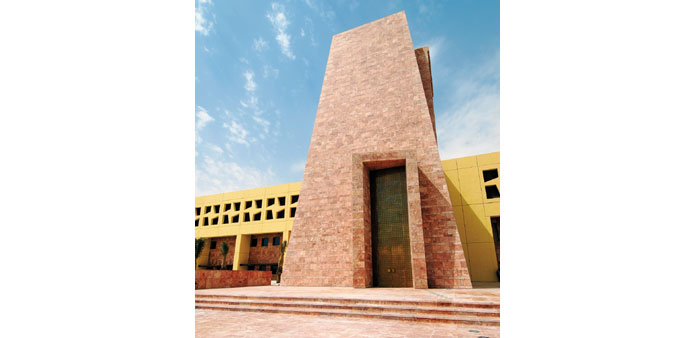|
Texas A&M University at Qatar (TAMUQ) has been awarded Exceptional Proposal recognition by the Qatar National Research Fund (QNRF) National Priorities Research Programme (NPRP) at QNRF’s sixth annual Research Forum. |
Texas A&M at Qatar received 38 awards out of 118 proposals submitted - a 32% success rate - totalling $31.7mn in research funding.
Dr Mark H Weichold, dean and CEO of TAMUQ, said: “It is fundamental to Texas A&M at Qatar’s mission to lead efforts that build research capacity in Qatar and contribute to Qatar’s goal of becoming a knowledge-based economy.
“Our success in this recent NPRP cycle of awards supports our mission to be a valued resource to the State of Qatar. I am tremendously proud that our faculty competes so well on a global scale and does so much to foster collaboration with experts in Qatar and around the world.”
Dr Kenneth Hall, associate dean of research and graduate studies, said: “This significant funding from the QNRF NPRP allows our faculty members and researchers to continue their relevant, real-world research for the benefit of Qatar. We are delighted and pleased with these awards, and are deeply grateful to QNRF.”
In addition to this achievement, the team led by Texas A&M at Qatar’s Dr Milivoj Belic, a physics professor in the Science Programme, was named the outstanding research team.
Belic’s team research focuses on photonics, the science of harnessing light. Photonics plays a major role in driving economic growth and employment throughout the world, while solving important societal challenges in information and consumer technologies, renewable energy, health, manufacturing and security.
The support of essential fundamental and applied research in photonics will place Qatar in a leading position globally in this high-impact, multidisciplinary field, Belic said.
“In terms of outcomes, the team has been highly successful. We generated about 100 papers published in highly reputed, peer-reviewed journals in physics, such as Physical Review A&E, Optics Letters, Optics Express and Laser Photonics Reviews. In three years since publication, these papers have attracted a few hundred citations and the number is rapidly rising,” Belic said.

